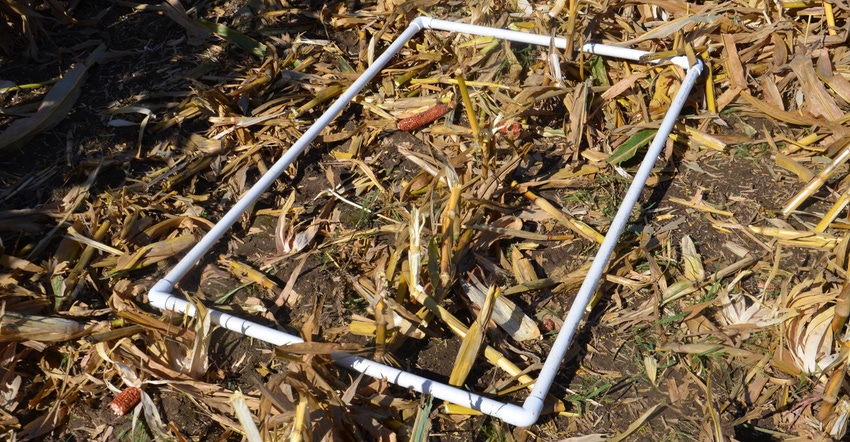
How much corn do you leave in the field? It takes a little work to find out, but once you know, perhaps you will adjust the combine. Or maybe you’ll harvest at higher moisture to reduce loss potential.
In 2019, Indiana Prairie Farmer; Purdue University, through Bob Nielsen, Extension corn specialist; and the Throckmorton Purdue Agricultural Center farm crew, headed by Pete Illingworth, conducted a trial at the center in Romney, Ind., that looked at three different harvest dates. One facet of the trial was measuring harvest losses. Beck’s provided seed for the trial.
“Total losses were extremely low for October and November harvests,” Nielsen says. “That’s partly because the Throckmorton farm crew does an excellent job prepping the center’s Case IH combine.”
Indeed, total loss based on counting kernels and looking for whole ears was 0.73 bushel per acre in October and 0.28 bushel per acre in November. With corn yielding over 200 bushels per acre, that’s well under 0.5% loss. Based on previous studies, that’s extremely low.
Note, however, that average grain moisture was 24.4% in October and 21.5% in November. The November harvest was just after a snow, which toughened stalks. Nielsen would expect more shelling if corn were drier.
What studies say
Losses in December were higher because lodging jumped from almost none to nearly 40%. Whole ear loss counted for about 80% of that loss.
Loss due to shelling at the head or failure to remove kernels from cobs amounted to less than 0.75 bushel for all harvest dates. The driest corn harvested was 20.8% in December.
However, a third hybrid used in the trial as a buffer and not weighed in the results was an earlier hybrid. Even at 19% in December, shelling losses at the head were over a bushel per acre for that hybrid.
“We ran a field planted earlier with the same hybrid at 17% in mid-October, and there was considerable shelling at the head,” Illingworth says. “We didn’t measure it, but there were more kernels on the ground than we wanted.”
Sam McNeill, Extension ag engineer at the University of Kentucky, noted in talks to GSI staff members that it’s typical for corn harvest losses to be highest when corn is very dry. He refers to information from Mississippi State University Extension, which indicates harvest losses are lowest when corn is harvested at 26% moisture. Typical losses at that moisture level in those studies were 1% to 3%.
Measuring losses
University of Georgia Extension Service Bulletin 973, originally published in 2006 and revised in 2012, explains how to measure field losses. First, for 30-inch-row corn, construct a 30-by-48-inch frame containing 10 square feet.
To check header loss, shell into the field and then back up 20 feet. Place the frame over each row. Two kernels per square foot represent 1 bushel per acre. So, 20 kernels within the frame represent 1 bushel of loss. Average the counts per row to get average loss per row.
Also use the frame to check behind the center of the combine for kernels still on the cob.
Then look for whole ears in 1/100 acre. That’s 29 feet of row for each of six rows. Each ¾-pound ear equals a bushel per acre of loss.
Then add the three loss components together to get total loss per acre.
About the Author(s)
You May Also Like




